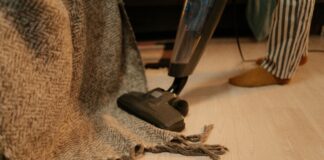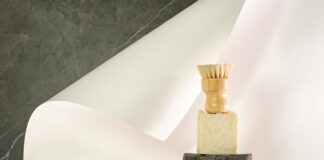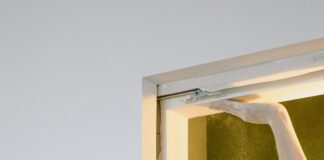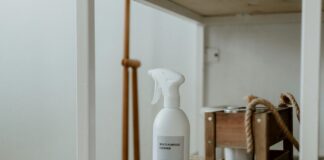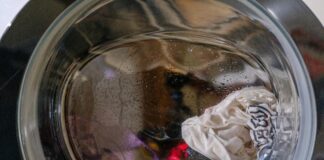How To Get Rid Of Couch Stains The DIY Way: Easy...
How To Get Rid Of Couch Stains The DIY Way: Easy Expert Tips is your ultimate guide to transforming your dirty, stained couch into...
How To Make Your Own Bathroom Air Fresheners That Impress Everyone
If you're tired of those boring, chemical-laden sprays that barely mask bathroom odors, then how to make your own bathroom air fresheners is the...
How To Dust And Polish Wood Furniture Naturally For Stunning Shine
Looking for the best way to dust and polish wood furniture naturally without using harsh chemicals? You’re in the right place! This article dives...
How To Make Your Own Bathroom Air Fresheners That Truly Impress
Looking to transform your bathroom into a fragrant oasis without spending a fortune? How To Make Your Own Bathroom Air Fresheners That Truly Impress...
How To Remove Pet Hair From Furniture And Carpets Easily
If you’re a proud pet owner, you know how challenging it can be to keep your home clean and free from stubborn pet hair....
How To Make Your Own Bathroom Air Fresheners That Truly Impress
Looking for how to make your own bathroom air fresheners that truly impress? You’re in the right place! Many people struggle with finding the...
How To Make Your Own Bathroom Air Fresheners That Truly Impress
Looking to transform your bathroom into a fresh, inviting oasis without spending a fortune? How To Make Your Own Bathroom Air Fresheners That Truly...
How To Clean Area Rugs Without A Carpet Cleaner: Easy Secrets...
Are you struggling to figure out how to clean area rugs without a carpet cleaner? Maybe you don’t own one, or you simply want...
How To Make Your Own Bathroom Air Fresheners That Wow Guests
Looking for how to make your own bathroom air fresheners that wow guests? You’re in the right place! Imagine walking into your bathroom and...
How To Make Your Own Bathroom Air Fresheners That Truly Delight
Are you tired of those chemical-laden, overpowering store-bought sprays that promise freshness but leave your bathroom smelling worse? Discover how to make your own...
How To Make Your Own Bathroom Air Fresheners That Wow Guests
Looking for how to make your own bathroom air fresheners that wow guests? You’re in the right place! Imagine walking into a bathroom that...
How To Deep Clean Your Couch And Upholstery Like A Pro...
Are you tired of staring at that dull, stained couch and wondering how to deep clean your couch and upholstery like a pro today?...
How To Make Your Own Bathroom Air Fresheners That Truly Impress
Looking to transform your bathroom into a refreshing oasis without spending a fortune? How To Make Your Own Bathroom Air Fresheners That Truly Impress...
How To Make Your Own Bathroom Air Fresheners That Impress Instantly
Are you tired of those overpowering, chemical-laden sprays that promise freshness but leave your bathroom smelling worse? Wondering how to make your own bathroom...
How To Make Your Own Bathroom Air Fresheners That Wow Guests
Looking to make your own bathroom air fresheners that wow guests and leave a lasting impression? You’re in the right place! This article dives...
How To Clean Like A Professional Housekeeper: Expert Tips Revealed
Are you tired of spending hours cleaning your home only to feel like it’s never truly spotless? Wondering how to clean like a professional...
How To Make Your Own Bathroom Air Fresheners That Wow
Looking for how to make your own bathroom air fresheners that wow? You’re in the right place! This article dives deep into the world...
How To Make Your Own Bathroom Air Fresheners That Wow Guests
Are you tired of those boring, chemical-filled sprays that barely mask unpleasant odors in your bathroom? Wondering how to make your own bathroom air...
How To Make Your Own Bathroom Air Fresheners That Wow Guests
Looking to make your own bathroom air fresheners that wow guests and leave a lasting impression? You’re in the right place! This article will...
How To Turn Cleaning Into A Fun Family Activity That Everyone...
How To Turn Cleaning Into A Fun Family Activity That Everyone Loves is a question many parents often ask themselves. Cleaning can sometimes feel...
How To Make Your Own Bathroom Air Fresheners That Impress Everyone
Looking for a way to make your own bathroom air fresheners that impress everyone? You’re in the right place! This article dives deep into...
How To Make Your Own Bathroom Air Fresheners That Impress
Looking to transform your bathroom into a fresh, inviting oasis without spending a fortune? You’re in the right place! This guide on how to...
How To Make Your Own Bathroom Air Fresheners That Wow Everyone
Are you tired of those boring, chemical-filled bathroom sprays that barely mask odors? Wondering how to make your own bathroom air fresheners that wow...
How To Clean And Organize Your Cleaning Supplies Closet Effortlessly
Are you tired of struggling to find your cleaning products every time you need them? How to clean and organize your cleaning supplies closet...
How To Make Your Own Bathroom Air Fresheners That Wow Everyone
Are you tired of those boring, chemical-filled store-bought sprays that barely mask bathroom odors? Wondering how to make your own bathroom air fresheners that...
How To Make Your Own Bathroom Air Fresheners That Truly Impress
Looking for how to make your own bathroom air fresheners that truly impress? You’re in the right place! Many people struggle with finding the...
How To Make Your Own Bathroom Air Fresheners That Wow Sensations
Looking for how to make your own bathroom air fresheners that wow sensations? You’re in the right place! Many people underestimate the power of...
How To Remove Odors From Every Room In Your House Easily
Are you tired of walking into your home and instantly noticing unpleasant smells? How to remove odors from every room in your house easily...
How To Make Your Own Bathroom Air Fresheners That Truly Impress
Looking to transform your bathroom into a refreshing oasis without spending a fortune on store-bought products? How To Make Your Own Bathroom Air Fresheners...
How To Make Your Own Bathroom Air Fresheners That Truly Delight
Are you tired of those boring, chemical-filled sprays that barely mask bathroom odors? Discover how to make your own bathroom air fresheners that truly...
How To Make Your Own Bathroom Air Fresheners That Wow Guests
Looking to impress your visitors with a fresh, inviting bathroom scent? How To Make Your Own Bathroom Air Fresheners That Wow Guests is the...
How To Clean Your Home Using Only Baking Soda And Vinegar...
Looking for an easy, cost-effective, and eco-friendly way to keep your home spotless? How to clean your home using only baking soda and vinegar...
How To Make Your Own Bathroom Air Fresheners That Wow
Looking to transform your bathroom into a refreshing oasis without spending a fortune? How to make your own bathroom air fresheners that wow is...
How To Make Your Own Bathroom Air Fresheners That Truly Impress
Are you tired of those boring, chemical-filled store-bought sprays that barely mask bathroom odors? Wondering how to make your own bathroom air fresheners that...
How To Make Your Own Bathroom Air Fresheners That Impress
Looking to transform your bathroom into a fresh and inviting oasis without spending a fortune? How to make your own bathroom air fresheners that...
How To Deep Clean Your House Room By Room For Sparkling...
Are you tired of surface-level cleaning that just doesn’t cut it? Wondering how to deep clean your house room by room for sparkling results...
How To Make Your Own Bathroom Air Fresheners That Truly Refresh
Are you tired of those chemical-laden sprays that promise freshness but leave your bathroom smelling worse? Wondering how to make your own bathroom air...
How To Make Your Own Bathroom Air Fresheners That Truly Impress
Discover the secrets behind how to make your own bathroom air fresheners that truly impress and transform your space with delightful scents that guests...
How To Make Your Own Bathroom Air Fresheners That Truly Impress
Looking to transform your bathroom into a fresh, inviting oasis without breaking the bank? How to make your own bathroom air fresheners that truly...
How To Make Your Own All-Purpose Cleaning Spray At Home Easily
Looking for an easy way to make your own all-purpose cleaning spray at home without breaking the bank? You’re in the right place! This...
How To Make Your Own Bathroom Air Fresheners That Truly Delight
Are you tired of those chemical-laden, store-bought sprays that barely mask bathroom odors? Wondering how to make your own bathroom air fresheners that truly...
How To Make Your Own Bathroom Air Fresheners That Wow Everyone
Are you tired of those boring store-bought scents that barely mask bathroom odors? Wondering how to make your own bathroom air fresheners that wow...
How To Make Your Own Bathroom Air Fresheners That Truly Impress
Are you tired of those overpowering, chemical-laden sprays that promise freshness but leave your bathroom smelling worse? How to make your own bathroom air...
How To Clean Without Harsh Chemicals: Secrets To Natural Cleaners
Looking for how to clean without harsh chemicals? You’re not alone! More people are switching to natural cleaning solutions that are safer, eco-friendly, and...
How To Make Your Own Bathroom Air Fresheners That Truly Delight
Are you tired of those overpowering, chemical-laden bathroom sprays that leave your space smelling artificial and unpleasant? Discover the secret to how to make...
How To Make Your Own Bathroom Air Fresheners That Impress Everyone
Are you tired of those boring, chemical-filled bathroom sprays that barely mask unpleasant odors? Wondering how to make your own bathroom air fresheners that...
How To Make Your Own Bathroom Air Fresheners That Truly Impress
Creating a fresh and inviting bathroom atmosphere can be a game-changer, but have you ever wondered how to make your own bathroom air fresheners...
How To Speed Clean Your Home In Minutes With Easy Expert...
Looking for how to speed clean your home in minutes without breaking a sweat? You’re not alone! In today’s fast-paced world, everyone wants to...
How To Make Your Own Bathroom Air Fresheners That Truly Delight
Discover the secret to transforming your bathroom into a fresh and inviting oasis with our ultimate guide on how to make your own bathroom...
How To Make Your Own Bathroom Air Fresheners That Impress
Looking to transform your bathroom into a refreshing oasis without spending a fortune? How To Make Your Own Bathroom Air Fresheners That Impress is...
How To Make Your Own Bathroom Air Fresheners That Truly Impress
Looking to transform your bathroom into a refreshing oasis without spending a fortune? How to make your own bathroom air fresheners that truly impress...
How To Create A Weekly Home Cleaning Schedule That Works Effortlessly
Creating an effective weekly home cleaning schedule that works effortlessly can feel like a daunting task, but what if there was a simple way...
How To Make Your Own Bathroom Air Fresheners That Wow Senses
Looking for how to make your own bathroom air fresheners that wow senses? You're in the right place! Bathrooms can often develop unpleasant odors...
How To Make Your Own Bathroom Air Fresheners That Wow Senses
Are you tired of those boring, chemical-laden bathroom sprays that barely mask odors and leave an unpleasant scent? Discover how to make your own...
How To Make Your Own Bathroom Air Fresheners That Wow
Are you tired of those boring, chemical-filled bathroom air fresheners that barely mask odors? Wondering how to make your own bathroom air fresheners that...
How To Create A Weekly Home Cleaning Schedule That Works Wonders
Creating a weekly home cleaning schedule that works wonders can completely transform your living space and daily routine. Ever wonder how some people manage...
How To Make Your Own Bathroom Air Fresheners That Wow Everyone
Looking for how to make your own bathroom air fresheners that wow everyone? You’ve come to the right place! In this article, we’ll dive...
How To Make Your Own Bathroom Air Fresheners That Impress
Looking for how to make your own bathroom air fresheners that impress? You’re in the right place! In this article, we’ll uncover easy and...
How To Make Your Own Bathroom Air Fresheners That Impress Instantly
Looking to transform your bathroom atmosphere instantly without spending a fortune? Wondering how to make your own bathroom air fresheners that impress instantly and...
How To Make Your Own Bathroom Air Fresheners That Truly Impress
Are you tired of those generic, chemical-filled sprays that barely mask bathroom odors? Wondering how to make your own bathroom air fresheners that truly...
How To Make Your Own Bathroom Air Fresheners That Impress
Looking to transform your bathroom into a refreshing oasis without spending a fortune? How To Make Your Own Bathroom Air Fresheners That Impress is...
How To Make Your Own Bathroom Air Fresheners That Wow Guests
Looking for how to make your own bathroom air fresheners that wow guests? You're in the right place! This article dives deep into the...
How To Make Your Own Bathroom Air Fresheners That Truly Impress
Looking for how to make your own bathroom air fresheners that truly impress? You’re in the right place! In this article, we’ll dive deep...
How To Make Your Own Bathroom Air Fresheners That Wow Guests
Looking to impress your visitors with a fresh, inviting bathroom atmosphere? How to make your own bathroom air fresheners that wow guests is a...
How To Make Your Own Bathroom Air Fresheners That Truly Impress
Looking to transform your bathroom into a fresh-smelling oasis without spending a fortune? You're in the right place! This guide on how to make...
How To Make Your Own Bathroom Air Fresheners That Impress
Looking for how to make your own bathroom air fresheners that impress? You're in the right place! This article dives deep into the world...
How To Make Your Own Bathroom Air Fresheners That Truly Impress
Are you tired of those overpowering, chemical-filled sprays that promise freshness but leave your bathroom smelling worse? Wondering how to make your own bathroom...
How To Make Your Own Bathroom Air Fresheners That Wow Guests
Looking to wow your guests with delightful bathroom scents? Discover the ultimate guide on how to make your own bathroom air fresheners that not...
How To Make Your Own Bathroom Air Fresheners With Easy DIY...
Looking for easy DIY tips to make your own bathroom air fresheners that actually work? You’re in the right place! This article dives into...
How To Make Your Own Bathroom Air Fresheners That Impress
Looking for how to make your own bathroom air fresheners that impress? You’re in the right place! This article dives deep into the world...
How To Make Your Own Bathroom Air Fresheners That Truly Impress
Looking to transform your bathroom into a refreshing oasis without spending a fortune? How to make your own bathroom air fresheners that truly impress...
How To Make Your Own Bathroom Air Fresheners That Actually Work
Looking for how to make your own bathroom air fresheners that actually work? You’re not alone! Many people struggle with unpleasant odors in their...
How To Make Your Own Bathroom Air Fresheners That Truly Delight
Looking for how to make your own bathroom air fresheners that truly delight? You’re in the right place! Many people overlook the impact of...
How To Make Your Own Bathroom Air Fresheners That Wow Senses
Looking to transform your bathroom into a refreshing oasis without spending a fortune? Wondering how to make your own bathroom air fresheners that wow...
How To Make Your Own Bathroom Air Fresheners That Wow Guests
Looking to impress visitors with a fresh and inviting bathroom? How to make your own bathroom air fresheners that wow guests is the ultimate...
How To Make Your Own Bathroom Air Fresheners That Truly Impress
Looking for how to make your own bathroom air fresheners that truly impress? You’re in the right place! Everyone wants their bathroom to smell...
How To Make Your Own Bathroom Air Fresheners That Truly Delight
Creating a fresh and inviting bathroom atmosphere can be a game-changer for your home, but have you ever wondered how to make your own...
How To Make Your Own Bathroom Air Fresheners That Impress
Looking to transform your bathroom into a refreshing oasis without spending a fortune? How to make your own bathroom air fresheners that impress is...
How To Make Your Own Bathroom Air Fresheners That Truly Impress
Looking to transform your bathroom into a fresh, inviting oasis without spending a fortune on store-bought sprays? Wondering how to make your own bathroom...
How To Make Your Own Bathroom Air Fresheners That Impress
Looking to transform your bathroom into a fresh, inviting oasis without spending a fortune? How To Make Your Own Bathroom Air Fresheners That Impress...
How To Make Your Own Bathroom Air Fresheners That Really Work
Looking for how to make your own bathroom air fresheners that really work? You’re in the right place! Many people struggle with keeping their...
How To Make Your Own Bathroom Air Fresheners That Wow
If you’ve ever walked into a bathroom that smells less than fresh, you know how important it is to have a pleasant scent lingering...
How To Make Your Own Bathroom Air Fresheners That Actually Work
Are you tired of those chemical-filled commercial sprays that promise freshness but leave your bathroom smelling worse? How to make your own bathroom air...
How To Make Your Own Bathroom Air Fresheners That Truly Delight
Looking for how to make your own bathroom air fresheners that truly delight? You’re in the right place! Imagine transforming your bathroom into a...
How To Make Your Own Bathroom Air Fresheners That Truly Impress
Looking to transform your bathroom into a refreshing oasis? Wondering how to make your own bathroom air fresheners that truly impress? You're in the...
How To Make Your Own Bathroom Air Fresheners That Wow Everyone
Looking to transform your space with how to make your own bathroom air fresheners that wow everyone? You've come to the right place! In...
How To Make Your Own Bathroom Air Fresheners That Truly Delight
Are you tired of those generic, chemical-laden bathroom sprays that barely mask odors? Discover how to make your own bathroom air fresheners that truly...
How To Make Your Own Bathroom Air Fresheners That Wow Your...
Are you tired of those boring, chemical-filled bathroom sprays that just don’t cut it? Wondering how to make your own bathroom air fresheners that...
How To Make Your Own Bathroom Air Fresheners That Truly Impress
Looking to make your own bathroom air fresheners that truly impress? You’re not alone! Many people are turning to DIY solutions to keep their...
How To Make Your Own Bathroom Air Fresheners That Wow Guests
Are you tired of those boring, chemical-laden store-bought bathroom air fresheners that barely mask unpleasant odors? Wondering how to make your own bathroom air...
How To Make Your Own Bathroom Air Fresheners That Really Work
Are you tired of those chemical-laden, store-bought sprays that promise freshness but leave your bathroom smelling worse? Discover the secret to how to make...
How To Make Your Own Bathroom Air Fresheners That Truly Impress
Looking to transform your bathroom into a fragrant oasis? How to make your own bathroom air fresheners that truly impress is the ultimate guide...
How To Make Your Own Bathroom Air Fresheners That Wow Everyone
Looking to make your own bathroom air fresheners that wow everyone? You’re in the right place! Everyone wants a bathroom that smells fresh and...
How To Make Your Own Bathroom Air Fresheners That Truly Impress
Looking to transform your bathroom into a fresh, inviting oasis without spending a fortune? How to make your own bathroom air fresheners that truly...
How To Make Your Own Bathroom Air Fresheners That Impress Naturally
Looking for how to make your own bathroom air fresheners that impress naturally? You’re in the right place! In this article, we’ll dive into...
How To Make Your Own Bathroom Air Fresheners That Truly Impress
Are you tired of those boring, artificial-smelling sprays that barely mask bathroom odors? Discover how to make your own bathroom air fresheners that truly...
How To Make Your Own Bathroom Air Fresheners That Truly Impress
Looking for how to make your own bathroom air fresheners that truly impress? You’re in the right place! Creating DIY bathroom air fresheners not...
How To Make Your Own Bathroom Air Fresheners That Truly Impress
Looking to transform your bathroom into a refreshing oasis without spending a fortune? How To Make Your Own Bathroom Air Fresheners That Truly Impress...
How To Make Your Own Bathroom Air Fresheners That Truly Impress
Looking for how to make your own bathroom air fresheners that truly impress? You’re in the right place! Many people overlook the impact of...
How To Make Your Own Bathroom Air Fresheners That Truly Impress
Are you tired of those generic, chemical-filled bathroom sprays that barely mask odors? Wondering how to make your own bathroom air fresheners that truly...
How To Make Your Own Bathroom Air Fresheners That Truly Impress
Looking for how to make your own bathroom air fresheners that truly impress? You’re in the right place! Everyone wants a bathroom that smells...
How To Make Your Own Bathroom Air Fresheners That Truly Delight
Looking for how to make your own bathroom air fresheners that truly delight your senses and transform your space? You’re in the right place!...
How To Make Your Own Bathroom Air Fresheners That Wow Guests
Are you tired of those boring, chemical-filled store-bought bathroom air fresheners that barely mask unpleasant smells? Wondering how to make your own bathroom air...
How To Make Your Own Bathroom Air Fresheners That Impress
Are you tired of those boring, chemical-filled store-bought sprays that never seem to last? Wondering how to make your own bathroom air fresheners that...
How To Make Your Own Bathroom Air Fresheners That Wow Guests
Looking to impress visitors and keep your space smelling amazing? Discover how to make your own bathroom air fresheners that wow guests with simple,...
How To Make Your Own Bathroom Air Fresheners That Really Work
Looking to transform your bathroom into a fresh, inviting oasis without spending a fortune? How To Make Your Own Bathroom Air Fresheners That Really...
How To Make Your Own Bathroom Air Fresheners That Truly Impress
Looking for how to make your own bathroom air fresheners that truly impress? You’re not alone! Many people want to elevate their bathroom experience...
How To Make Your Own Bathroom Air Fresheners That Impress
Looking to transform your space with how to make your own bathroom air fresheners that impress? You’re in the right place! This article dives...
How To Make Your Own Bathroom Air Fresheners That Impress Everyone
Looking to transform your bathroom into a refreshing oasis? Wondering how to make your own bathroom air fresheners that impress everyone? You’re in the...
How To Make Your Own Bathroom Air Fresheners That Truly Impress
Looking for how to make your own bathroom air fresheners that truly impress? You're in the right place! Many people overlook the power of...
How To Make Your Own Bathroom Air Fresheners That Wow Guests
Looking to impress visitors with a fresh, inviting bathroom but tired of the same old store-bought scents? How to make your own bathroom air...
How To Make Your Own Bathroom Air Fresheners That Truly Impress
Looking to transform your bathroom into a fresh, inviting oasis without spending a fortune? How to make your own bathroom air fresheners that truly...
How To Make Your Own Bathroom Air Fresheners That Impress
Looking to transform your bathroom into a refreshing oasis without spending a fortune? How to make your own bathroom air fresheners that impress is...
How To Make Your Own Bathroom Air Fresheners That Truly Impress
Looking to make your own bathroom air fresheners that truly impress? You’re in the right place! In this article, we’ll explore simple yet powerful...
How To Make Your Own Bathroom Air Fresheners That Wow Guests
Discover the secret to impressing visitors with how to make your own bathroom air fresheners that wow guests! If you’ve ever wondered how to...
How To Make Your Own Bathroom Air Fresheners That Wow Everyone
Looking for how to make your own bathroom air fresheners that wow everyone? You’re in the right place! Imagine walking into your bathroom and...
How To Make Your Own Bathroom Air Fresheners That Wow Guests
Looking to impress your visitors with a fresh and inviting bathroom atmosphere? Wondering how to make your own bathroom air fresheners that wow guests...
How To Make Your Own Bathroom Air Fresheners That Impress Everyone
Looking to transform your bathroom into a refreshing oasis without spending a fortune? How To Make Your Own Bathroom Air Fresheners That Impress Everyone...
How To Make Your Own Bathroom Air Fresheners That Wow Guests
Discover the secret to transforming your bathroom into a refreshing oasis with how to make your own bathroom air fresheners that wow guests. Ever...
How To Make Your Own Bathroom Air Fresheners That Truly Impress
Looking for how to make your own bathroom air fresheners that truly impress? You’re in the right place! Everyone wants a bathroom that smells...






